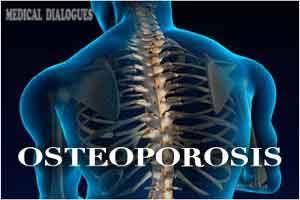- Home
- Editorial
- News
- Practice Guidelines
- Anesthesiology Guidelines
- Cancer Guidelines
- Cardiac Sciences Guidelines
- Critical Care Guidelines
- Dentistry Guidelines
- Dermatology Guidelines
- Diabetes and Endo Guidelines
- Diagnostics Guidelines
- ENT Guidelines
- Featured Practice Guidelines
- Gastroenterology Guidelines
- Geriatrics Guidelines
- Medicine Guidelines
- Nephrology Guidelines
- Neurosciences Guidelines
- Obs and Gynae Guidelines
- Ophthalmology Guidelines
- Orthopaedics Guidelines
- Paediatrics Guidelines
- Psychiatry Guidelines
- Pulmonology Guidelines
- Radiology Guidelines
- Surgery Guidelines
- Urology Guidelines
Increased dietary selenium may decrease osteoporosis risk

China: A recent study published in the BMC Musculoskeletal Disorders journal has established a negative link between dietary intake of selenium (Se) and osteoporosis (OP) risk.
According to the study, participants (middle-aged and elderly people) with lower dietary Se intake are at a higher risk of developing osteoporosis. The researchers, although, could not determine whether the link is casual and they call for more investigation.
Osteoporosis is one of the most commonly occurring metabolic bone disorders. It is characterized by decreased bone mineral density (BMD) in which bones become weak and brittle. This increases bone fragility making it susceptible to fracture. The disorder predominantly affects older adults, and, globally, an estimated 200 million people have osteoporosis.
Some risk factors for osteoporosis cannot be avoided such as advancing age and sex. But there are also some modifiable risk factors such as smoking tobacco and drinking alcohol -- that increase the risk of osteoporosis. Some researchers believe that dietary factors may also play a part. Tii now, most nutrition research have emphasized only on calcium due to its pivotal role in bone health.
Selenium is a trace mineral element essential for human beings and is present in a wide range of foods including fish, shellfish, red meat, grains, eggs, chicken, liver, and garlic. Se regulates cellular processes by behaving as a component of Se-dependent antioxidant enzyme that eliminates intracellular reactive oxygen species (ROS). Therefore, deficiency in Se can lead to an increase in ROS levels, which has been considered as the proximal culprit in the pathogenesis of OP.
Yuqing Wang, Department of Orthopaedics, Xiangya Hospital, Central South University, Changsha, Hunan, China, and colleagues examined the correlation between dietary selenium intake and the prevalence of osteoporosis in the general middle-aged and older population in China.
The researchers collected data from a population-based cross-sectional study performed at the Xiangya Hospital Health Management Centre. Dietary Se intake was evaluated in a total of 6267 subjects (mean age: 52.2 ± 7.4 years; 42% women) using a validated semi-quantitative food frequency questionnaire. The prevalence of OP among the included subjects was 9.6% (2.3% in men and 19.7% in women).
OP was diagnosed on the basis of bone mineral density scans using a compact radiographic absorptiometry system. The correlation between dietary Se intake and the prevalence of OP was primarily examined by multivariable logistic regression.
Read Also: Vitamin D and Calcium supplements do not reduce fracture risk in elderly, finds meta-analysis
Key findings of the study include:
- Compared with the lowest quartile, the energy intake, age, gender and body mass index (BMI)-adjusted odds ratios of OP were 0.72, 0.72 and 0.47 for the second, third and fourth quartiles of dietary Se intake, respectively.
- The results remained consistent in male and female subjects.
- Adjustment for additional potential confounders (i.e., smoking status, drinking status, physical activity level, nutritional supplements, diabetes, hypertension, fibre intake, and calcium intake) did not cause substantial changes to the results.
Read Also: Is Calcium safe for prevention of postmenopausal osteoporosis?
"In the middle-aged and elderly humans, participants with lower levels of dietary Se intake have a higher prevalence of OP in a dose-response manner," wrote the authors.
"The causal relationship between dietary Se intake and the prevalence of OP was not addressed in the present study, so the conclusions should be reassured by further prospective studies, they concluded.
The study, "Association between Dietary Selenium Intake and the Prevalence of Osteoporosis: A Cross-Sectional Study," is published in the journal BMC Musculoskeletal Disorders.

Disclaimer: This site is primarily intended for healthcare professionals. Any content/information on this website does not replace the advice of medical and/or health professionals and should not be construed as medical/diagnostic advice/endorsement or prescription. Use of this site is subject to our terms of use, privacy policy, advertisement policy. © 2020 Minerva Medical Treatment Pvt Ltd